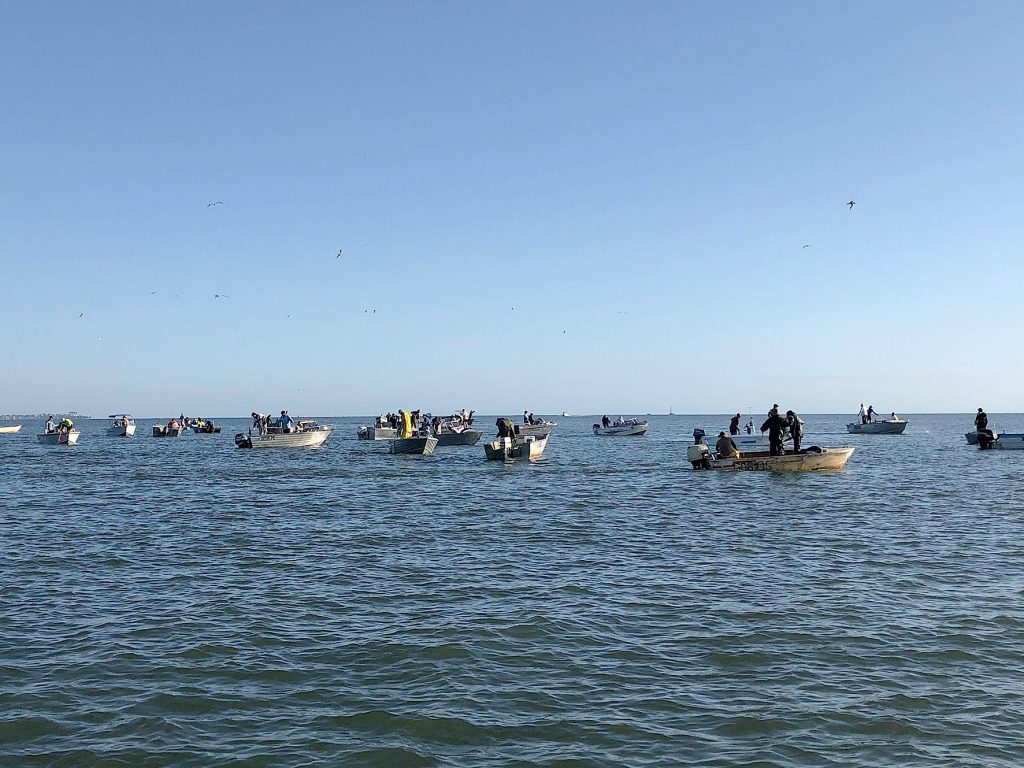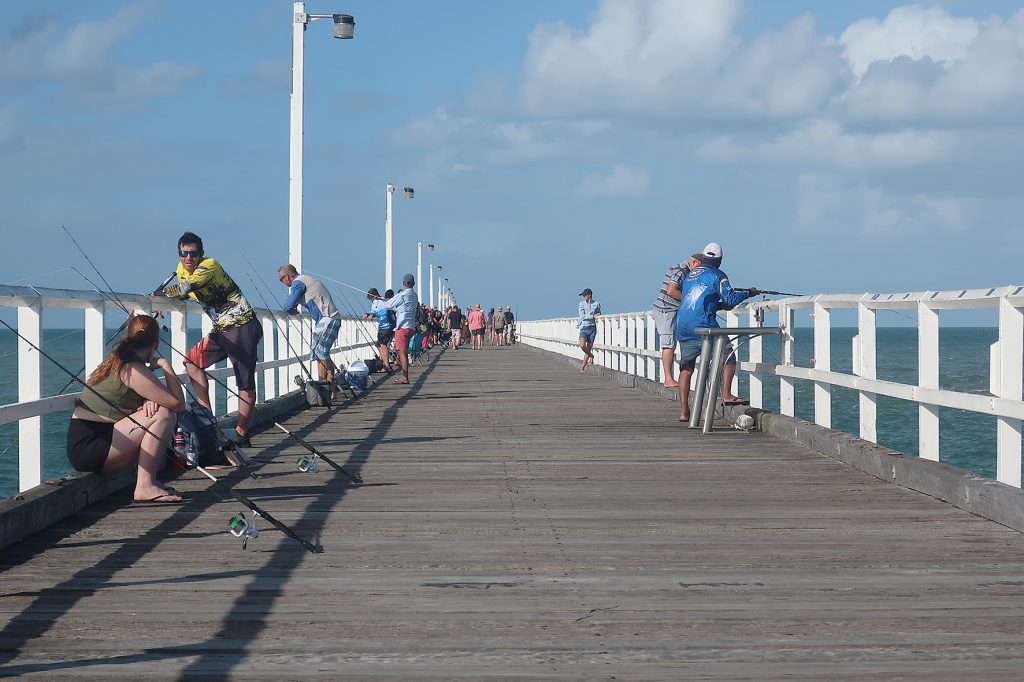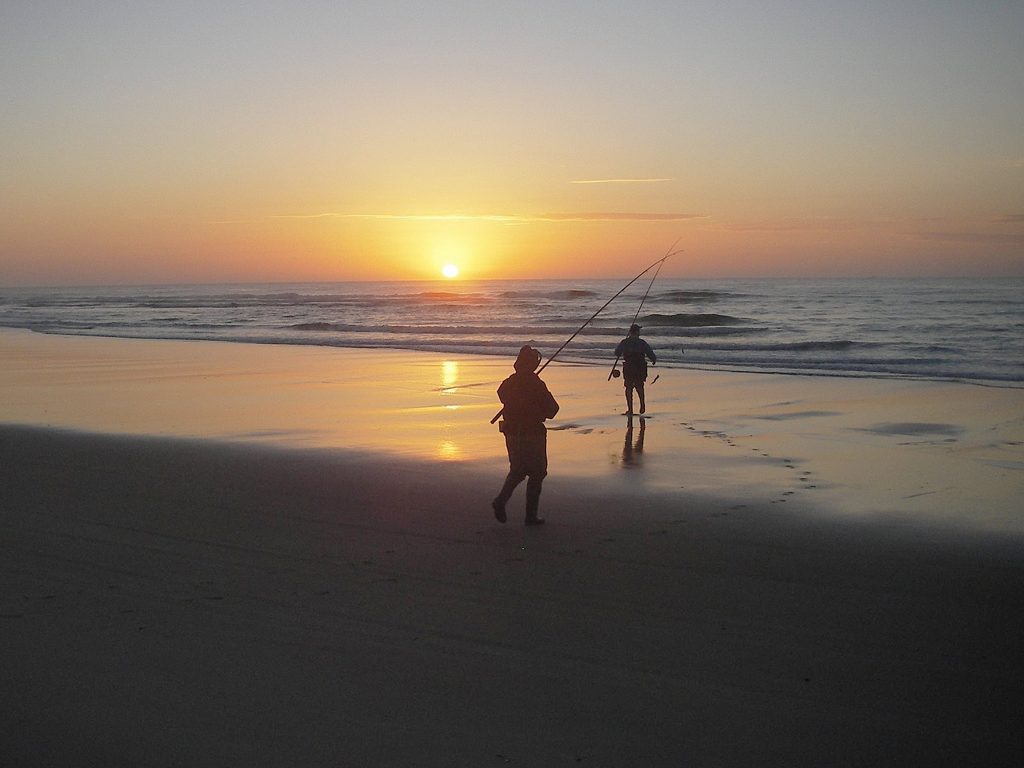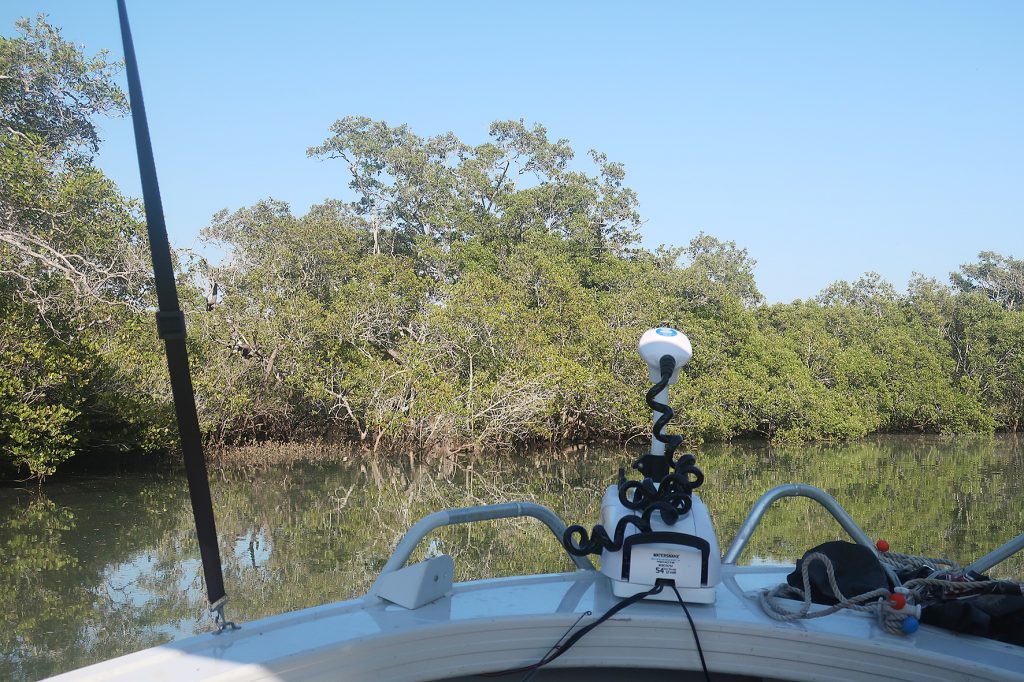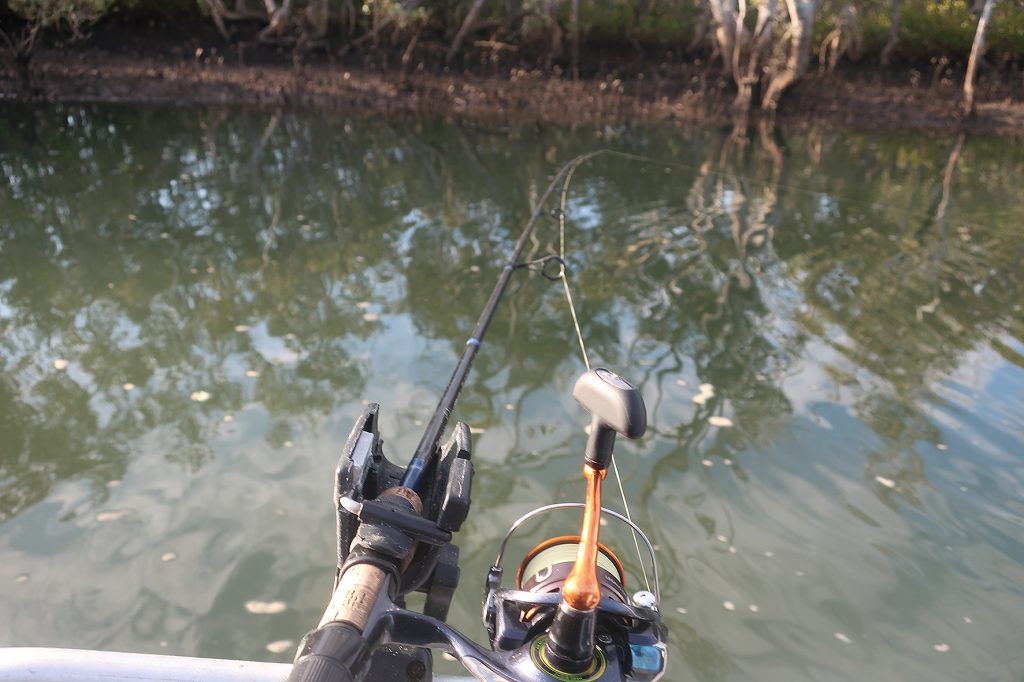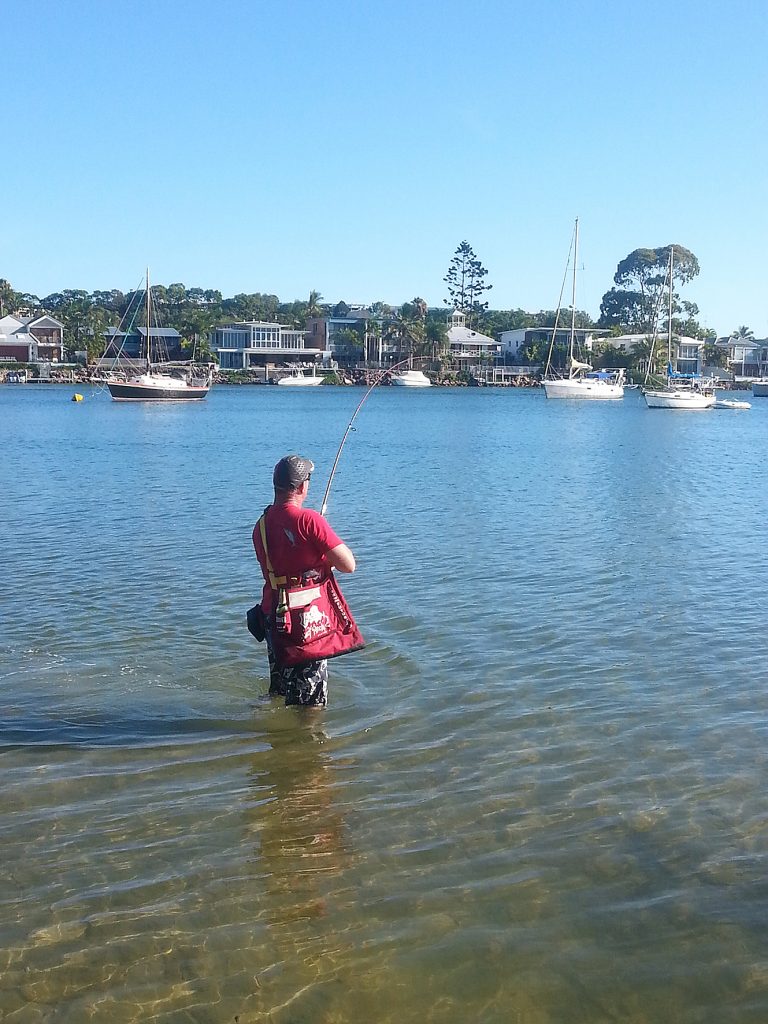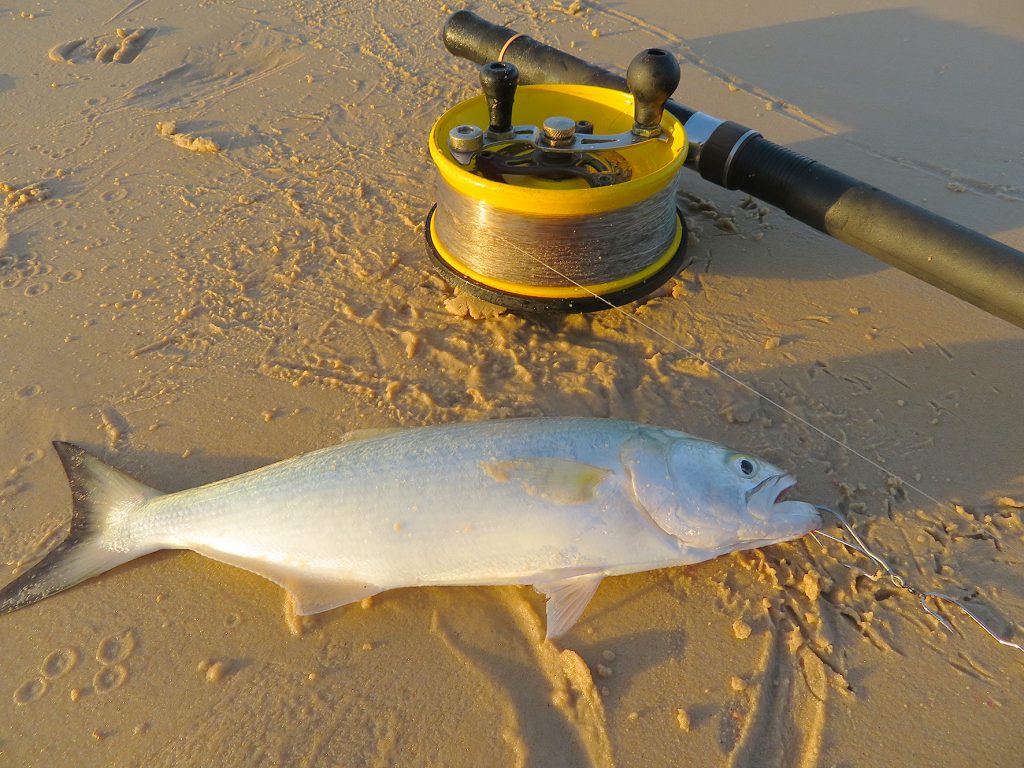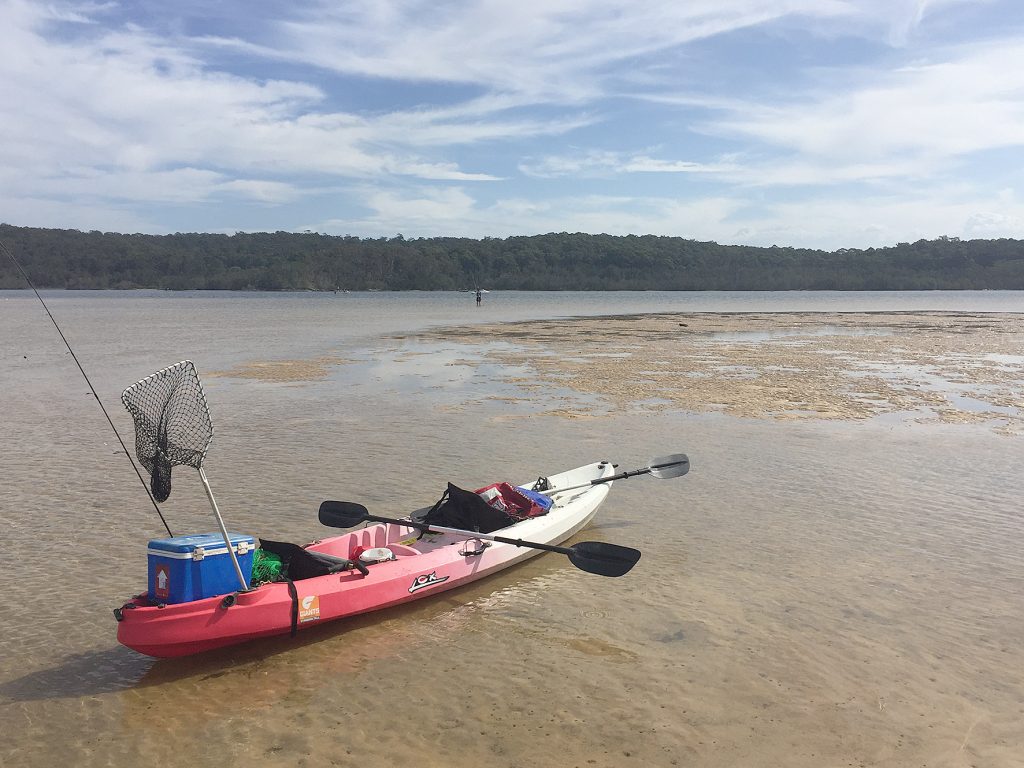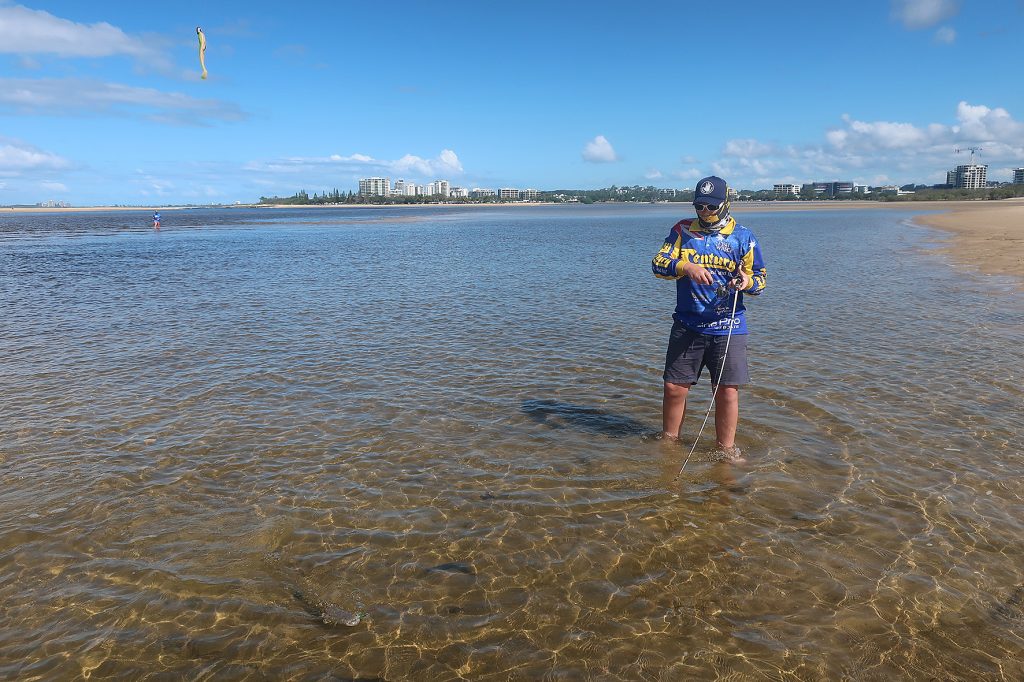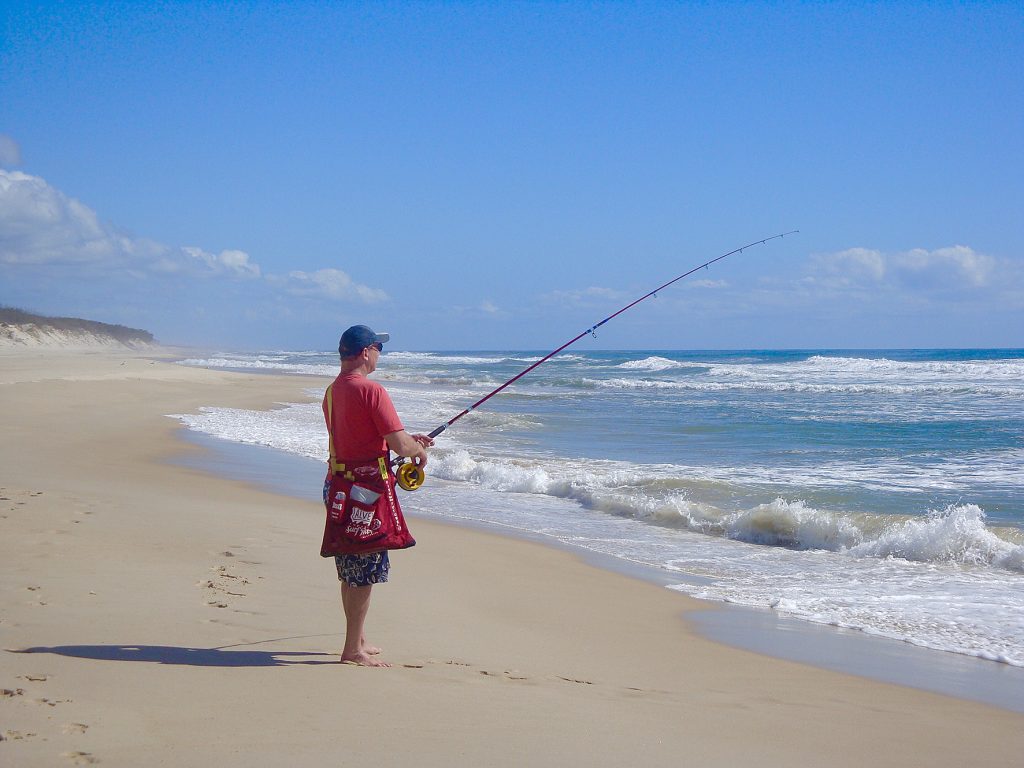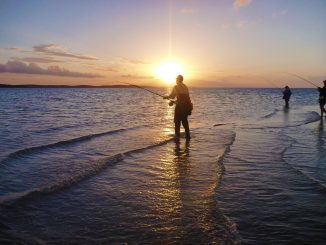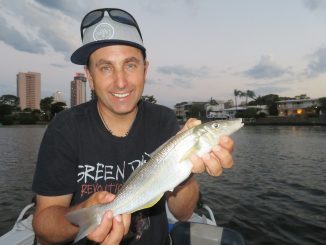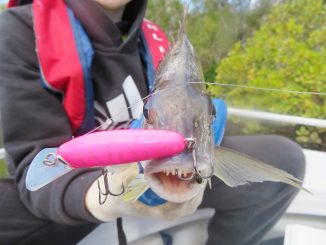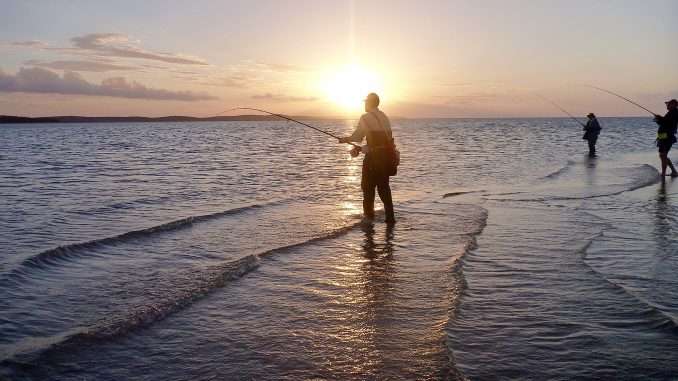
- By Sean Thompson
With our busy lifestyles and restricted movements over the last couple of years, the thought of a holiday is very enticing. However, parents with school-aged kids know only too well that your holidays are restricted to the busy school holiday periods including Easter, June, September and the Christmas holidays. And for locals in popular holiday destinations, their quiet little town can become very busy with tourists.
What this all means from a fishing perspective is that the waterways, beaches and boat ramps at these locations can become very, very busy, especially during the peak times of about 9am-5pm. This means there are jet skis, powerboats, stand-up paddle-boarders, kayakers, swimmers, surfers and numerous anglers at your favourite fishing locations.
This certainly presents challenges, and without a doubt fishing during the busy school holiday periods can be harder than most times. But all is not lost – there are locations, times and plans you can put in place to avoid, or at least minimise, the impact of the crowds on your fishing results.
Choosing your holiday destination
Obviously, when it comes to the choice of holiday destination, the bigger the location the more likely that crowds are going to be a problem. One option is to jump on Google Earth or look at a map and explore up and down the coastline to find some smaller little coastal villages and see if you can book in. You will be amazed at the number of little fishing towns across Australia. Alternatively, you could head inland and stay at a caravan park at an inland dam or camp by a river somewhere.
If you do manage to book in at one of these locations where you haven’t been before, be sure to do your research first. Search up some articles on the area on the internet, and give the local tackle shop a call about what you can expect. Social media group pages on a particular region can be another source, but be aware, there are a lot of keyboard warriors or so-called experts who either don’t know as much as they think they do, or even take weird pleasure in trying to give as much misinformation as possible.
Best times during the holidays
Not everyone can book into (or may want to go to) a quiet little location, especially when you consider other family members’ preferences. So if this means you do end up at a popular tourist destination, all is not lost fishing-wise, as there are still certain times and days when the crowds on or around the water can be smaller.
Making the effort to get up and start fishing just before the dawn can really be worth it in the holiday periods. Those early starts also don’t have to be quite so early by the time Easter rolls around (or the September holidays) as daylight savings have finished in the southern states and the sun is rising quite a bit later than over summer.
The best thing about dawn is that the boat traffic in busy estuary or freshwater dams/lakes is usually pretty thin. Likewise, you may even have the beach to yourself until the first joggers/walkers arrive and they aren’t going to affect your fishing anyway. One thing to be aware of though is that on days when the wind forecast predicts a glass-out, the boat ramps, particularly with close access to offshore locations, can still be very busy even at dawn, so get there an hour or more before you might usually.
While maybe not as quiet as dawn, dusk is of course your next best option to be hitting the beach or waterways (provided you have all the correct lighting if you are on a boat). As the sun starts to go down, or that evening chill start to fill the air, most of the families and thrill-seekers on jetskis, powerboats etc. will be heading for home, so this is the time you want to be arriving to set up. Of course, you can check out your intended beach gutter during the day, or if in a boat gather some local knowledge about your intended spot, or just get all your gear and extra rigs ready.
Aside from dawn and dusk, weekdays will also be that little bit quieter, even during busy school holidays (with the exception of public holidays).
In addition, there are also a few days of the year, which despite being a public holiday, can be a very quiet time on the water or beach. I don’t want to encourage anyone with young children to miss that excitement of Easter morning with your kids, but if you don’t have young kids, the morning of Easter could be for you. Otherwise, one public holiday that I have fished myself and found surprisingly quiet is New Year’s Day, or at least between dawn and until about mid-morning. I put this down to all the hangovers and the late night seeing in the New Year. So, if you are prepared to have an early night or are able to pull yourself out of bed early, you will be surprised just how quiet it can be very early on New Year’s Day!
Finding fish away from the crowds
Ok, so we have discussed places to stay, times of day as well as days of the week and year to minimise the crowds. Let’s now turn our attention to particular areas on those days, or even during one of the busier holiday times and places.
Beach fishing
To me, beach fishing is one of the most underutilized locations when you consider the vast amount of beach available to fish and the many and varied legal size fish available to catch. However, the problem many casual anglers have when fishing the beach is they just turn up to the same popular locations that swimmers or board riders do. Often that means these anglers wet a line in the closest spot the track brings them out – which is normally where many of the swimmers can be found, even on unpatrolled beaches.
Instead, take a walk a hundred metres or more away from the crowds to some likely looking gutters. It is worth it. Even during the middle of the day, shallow little gutters close to shore will see legal whiting and bream available if you use fresh live bait like beach worms or yabbies. If you are after bigger fish like tailor, Australian salmon and mulloway target those deeper gutters at the change of light periods mentioned above.
Reef and bay fishing
As noted above, on a public holiday with a light wind forecast, the boat ramps nearest to offshore locations can get extremely busy, even at dawn. This means there will obviously be a lot of boats out on the water. However, there is a lot of water out there to fish, even in bays or offshore spots close to some of the bigger cities, like Moreton Bay near Brisbane, Port Philip Bay in Victoria or Botany Bay in Sydney. Whilst there are many popular fishing ‘hotspots’ in these locations, even at dawn and dusk these spots can be like a carpark during the holidays.
For that reason, it can pay to spend a few hours early in your trip (or beforehand if you are a local), to try to find your own ‘new ground’. A brilliant way to do this is utilising some chart features on many of the newer charts available for your sounder. For instance, in my new Lowrance HDS live I have been using the ‘shading’ option which shades different areas of the seabed with a different shading category. This basically gives you terrain information on your chart.
In addition, I then use my C-MAP Reveal chart to create an additional overlay of depth contours using my own live sonar soundings. When combined, these features can help you pick up isolated little reefs or rises away from the crowds that may well hold fish, especially when the fish are spooked from all the traffic in the more popular spots.
Once again though, aim to fish these at the change of light times to maximise your chance of success, and try to be as quiet as possible to avoid spooking the fish when you arrive and while you are fishing there.
Estuaries
There are a few little tips and tricks you can apply to your estuary fishing to increase your chances of catching fish during the busy holiday periods.
One thing you can do if you have a small boat is to track down hidden bays or sneaky little creeks where fish will take refuge from heavy boat traffic during the middle hours of the day. You should move very quietly in these locations using an electric motor while you cast to the edge of weed beds, melon holes, drains or fallen timber.
In these shallow bays you can also troll small hardbodies or weighted soft plastic tails with an electric motor to cover more ground. I recall one particular weekend in an estuary down on the NSW south coast when a popular Canberra fishing competition was on, so I sought ‘shelter’ in a very shallow hidden bay few people knew about, or were able to take their bigger boats into. Back at the ramp everyone complained of a terrible day on the water except us. My brother-in-law and I had two days in a row of unbelievable flathead fishing on lures in water less than 2ft. I’ve looked for other such locations at busy holiday locations since.
Another option on big tides around the full and new moons is to sneak right up little shallow arms of creeks and rivers in the hour or two either side of high tide. These little creeks are great places for throwing your very lightly weighted soft plastic or little hardbody right into the structure to catch fish such as bream, flathead, mangrove jacks, grunter, estuary perch or bass (depending on your location of course). A live unweighted prawn, yabby or mullet thrown into these spots can also be deadly. Even during the middle of the day, you can catch fish in these spots – just fish the banks on the ‘shadowed’ side because that is where the fish will be holding.
Yet another location you can try in a busy estuary is the shallow side of a sandbank or island opposite the ‘mad’ deep channel side which can be full of jetskis and all sorts of boat traffic during the holidays. You can then fish the melon holes and slightly deeper drains in the shallows with live baits like worms and yabbies, and catch thumper whiting, bream and flathead with the family.
In this same spot, it can be worthwhile pumping yabbies into a sieve at high tide to create a berley trail. You will be amazed at the fish you will catch in such circumstances, even with noise and traffic going nuts behind you on the deeper, busier side.
Other locations
In freshwater dams, a good spot during the holidays is to fish around heavy structure, such as drowned trees and rocks that the jetskis and skiers will keep well clear of. This will not only be quieter, but is excellent structure to hold the fish.
If you are limited to a busy jetty or wharf, use a berley bucket near your bait, and fish unweighted or very lightly weighted. Like the little creeks, the same principle applies to jetties, wharves and even bridge pylons. The fish will hang in the structure around the shadows, so don’t cast way into the distance.
CRABBING AND PRAWNING
If all else fails, or you just want to increase your chances of a feed, you can try doing a bit of crabbing for sand or mud crabs. Be aware though, don’t leave your pots in channels or busy thoroughfares or your rope is likely to be cut by propellers. Be aware also that ‘share farmers’ (thieves) can be out in force, so if you can, fish close to your pots to keep an eye on them.
Another good option is to take some crab pots up those sneaky shallow bays and creeks I mentioned earlier, because few people go up them or can only access them around the high tide. You can place your pots there on a late afternoon high, and return in the morning as soon as the water will allow you on the rising tide.
Finally, as the saying goes, if you can’t beat ‘em, join ‘em! In Queensland from around January through to May/June, you can join the packs of boats in the creeks, rivers or bays chasing a feed of delicious banana prawns. You will be amazed how even in this ‘mosh pit’ of boats, most people are good natured and when the prawns are on, you can get a nice feed very quickly!
So, there you go. Chasing seafood over the holidays can be a bit tricky but there are times and places to increase your chances of taking home a feed, or just having some fun with catch and release. I hope this helps you to get a few over the busy period. In the meantime, be sure to jump onto my social media pages including Facebook, YouTube and Instagram under the name Ontour Fishing Australia for more tips and reports.
(First published in 2022)

